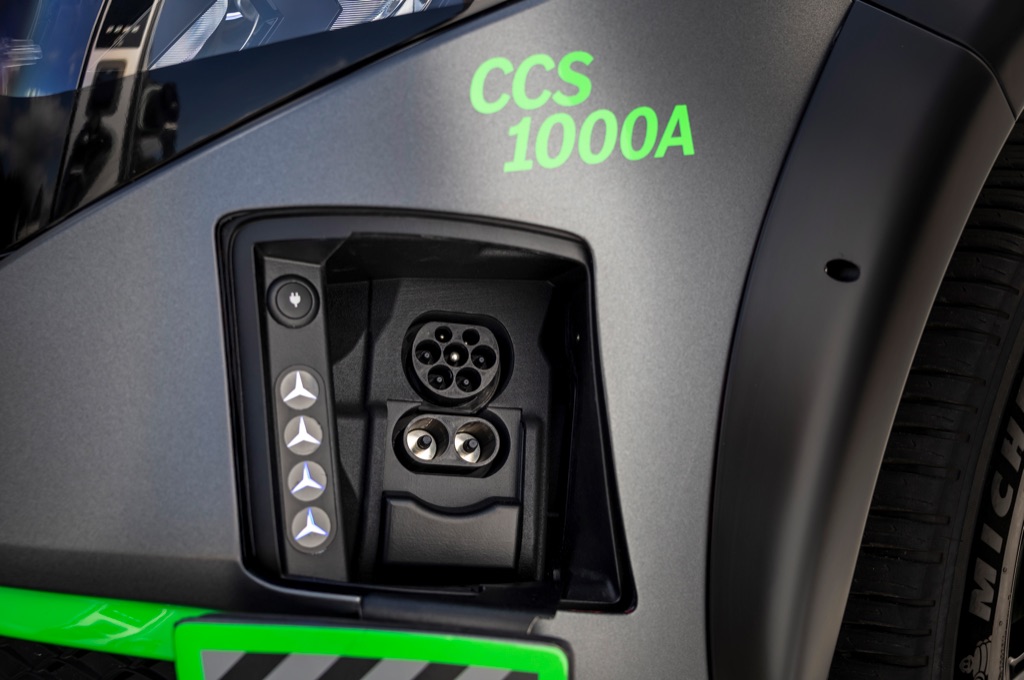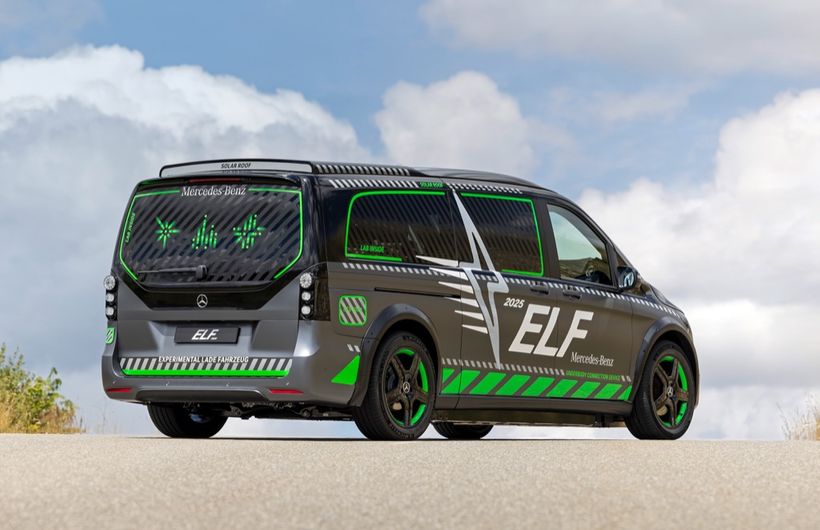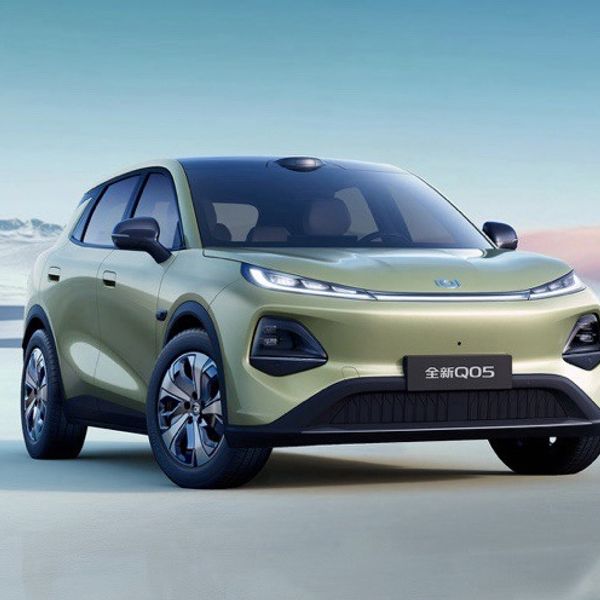Mercedes has built an experimental EV which can charge at up to 1mW, or use wireless connections to top up the battery. Called the ELF and based on an EQV, the name is derived from the German term Experimental-Lade-Fahrzeug – which translates to Experimental Charging Vehicle.
It is equipped multiple different charging options including two fast charging systems and two wireless formats. Each is being assessed for functionality and effectiveness in the real world.
The first is a Megawatt Charging System connector, which was originally developed for heavy-duty truck transport. This system allows charging capacities of around 1,000 kW – three times the speed of the fastest cars currently. In the ELF, MCS serves as a research tool for testing the thermal resilience and performance limits of high-voltage batteries, power electronics, charging cables and other components under extreme conditions.
The ELF also has a standard-looking CCS connector (Combined Charging System), but Mercedes is testing the technical limits of the format at higher charging capacities. The ELF can achieve a charging capacity of up to 900 kW. This means a 100 kWh can be added to a battery in 10 minutes.

The vehicle simulates typical charging scenarios that occur in everyday customer use, such as at fast charging stations along motorways or in urban areas. The components used, such as the battery, charging control and CCS hardware, are already close to series production and will be incorporated into future Mercedes models.
For slower charging, Mercedes is also testing charging without cables. The first way is contactless induction, transferring electrical energy via a charging system in the ground, like a wireless phone charger.
The ELF’s magnetic resonance charger power is currently 11 kW (AC), which is more than a typical home wallbox’s 7.2 kW. As part of the project, the technology is being tested for everyday usability, efficiency and compatibility with different vehicle heights and positions.
The other wireless solution is automated conductive charging via the vehicle floor. This uses special charging plates which connect to the bottom of the car, and energy is transferred via a direct physical connection using a connector under the floor. The charging power is also 11 kW AC.
The vehicle must be positioned in a specific area above the charging plate in order to start the charging process, which requires targeted parking. In the ELF, the driver is directed to the correct spot.
The ELF is also able to use bi-directional charging in both AC and DC. The research will help develop future Mercedes cars, vans and trucks.
 The ELF test van has MCS, CCS and wireless connectors
The ELF test van has MCS, CCS and wireless connectors 











